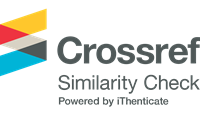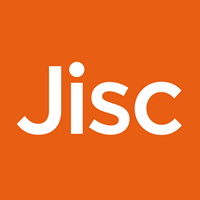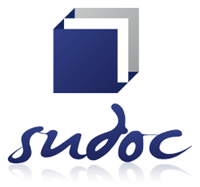Mounting a starry sky: methodological posibilities with images in education research
Abstract
This article explores methodological possibilities when working with an image, since, as Foucault taught us, there is an unavoidable relationship of irreducibility from the image to the word, and vice versa. We aim to outline some methodological paths to think about an ethical pedagogy of looking at the image based on Foucault's archeo-genealogical theories. To do so, we argue for the methodological power of an archeology embedded in the knowledge of images. This genealogical exercise allows us to think about a multiplicity of meanings about and with images anchored in Georges Didi-Huberman’s concept of montage where images as singular stars, when placed next to each other, allow for drawings of constellations that produce new spaces for the creation of thought, breathing zones and possible learnings of resistance. Drawing from the analysis of the Atlas Mnemosyne by the German art historian Aby Warburg, we use the term montage as a genealogical movement that seeks to emphasize the infinite work in front of an image, an exercise that allows us to think differently about what we are and what that we can become. In this scintillating ballet, a montage tries to apprehend the surviving and anachronistic dance that is the very historicity of the event that is the image – appearances, destruction and rebirths, or rather, an archeology of knowledge of and about the image that imposes a double condition on the order of knowledge: the inexhaustibility of the image and its abysmality. In its inexhaustibility we refer to the exuberance of its appearance, the way it opens us up beyond what is already known. It its abysmality we refer to, the dimensions of the image that are made irreducible to the provisional nature of the act of looking, a not-knowing which is insurmountable to our gaze in the face of the survival that make the images pulsate like living beings.
Downloads
References
Agamben, G. (2011). Nymphs. In J. Khalip, & R. Mitchell (Eds.), Releasing the image (p. 60-80). Stanford: Stanford University Press.
Alloa, E. (2015). Entre a transparência e a opacidade – o que a imagem dá a pensar. In E. Alloa (Org.), Pensar a imagem (p. 7-22). Belo Horizonte, MG: Autêntica.
Almeida, G. (2016). Por uma arqueologia crítica das imagens em Aby Warburg, André Malraux e Jean-Luc Godard. Significação, 43(46), 29-46. DOI: https://doi.org/10.11606/issn.2316-7114.sig.2016.115616
Balthazar, G., & Marcello, F. (2018). Corpo, gênero e imagem: desafios e possibilidades aos estudos feministas em educação. Revista Brasileira de Educação, 23(1), 1-23. DOI: http://dx.doi.org/10.1590/S1413-24782018230047
Balthazar, G. (2019). Quando a pedagogia toma posição ou o que aprendemos com os homens do triângulo rosa?. Revista Periodicus, 11(1), 209-233. DOI: https://doi.org/10.9771/peri.v1i11.29218
Baxandall, M. (2006). Padrões de intenção: a explicação histórica dos quadros. São Paulo, SP: Cia. das Letras.
Campos, D. (2016a). Um pensamento montado: Aby Warurg entre uma biblioteca e um Atlas. Revista Phoenix, 13(2), 1-20.
Campos, D. (2016b). A imagem e o anacronismo nas páginas da Garotas do Alceu. Dobras, 9(20), 53-67. DOI: https://doi.org/10.26563/dobras.v9i20.476
Campos, D. (2017). Um saber montado: Georges Didi-Huberman a montar imagem e tempo. Aniki, 4(2), 269-288. DOI: https://doi.org/10.14591/aniki.v4n2.299
Campos, D. (2020). A ninfa como personagem teórico de Warburg. Revista de História da Arte, 4(3), 225-245. DOI: https://doi.org/10.24978/mod.v4i3.4567
Daldry, S. (Diretor), & Rudin, S., Fox, R. (Produtores). (2003). As horas [Mídia de gravação: Filme/DVD]. USA: Paramount Pictures.
Didi-Huberman, G. (2012). Quando as imagens tocam o real. Pós: Revista do Programa de Pós-Graduação em Artes da Escola de Belas Artes da UFMG, 2(4), 204-219.
Didi-Huberman, G. (2013a). A imagem sobrevivente: história da arte e tempo de fantasmas segundo Aby Warburg. Rio de Janeiro, RJ: Contraponto.
Didi-Huberman, G. (2013b). Altas ou a gaia ciência inquieta. Lisboa, PT: KKYM.
Didi-Huberman, G. (2015a). Falenas: ensaios sobre aparição. Lisboa, PT: KKYM.
Didi-Huberman, G. (2015b). Diante do tempo: história da arte e anacronismo das imagens. Belo Horizonte, MG: Editora da UFMG.
Didi-Huberman, G. (2017). Quando as imagens tomam posição. Belo Horizonte, MG: Editora da UFMG.
Fischer, R. (2005). Escrita acadêmica: a arte de assinar o que se lê. In M. V. Costa, & M. I. Bujes (Orgs.), Caminhos investigativos III (p. 117-140). Rio de Janeiro, RJ: DP&A.
Fischer, R., & Marcello, F. (2016). Pensar o outro no cinema: por uma ética das imagens. Revista Teias, 17(47), 13-29. DOI: https://doi.org/10.12957/teias.2016.24577
Foucault, M. (1987). As palavras e as coisas. São Paulo, SP: Martins Fontes.
Foucault, M. (2013a). Conversa com Michel Foucault. In M. Foucault (Org.), Ditos e escritos VI: repensar a política (p. 289-347). Rio de Janeiro, RJ: Forense Universitária.
Foucault, M. (2013b). Nietzsche, a genealogia e a história. In M. Foucault (Org.), Ditos & Escritos II: arqueologia das ciências e história dos sistemas de pensamento (p. 271-295). Rio de Janeiro, RJ: Forense Universitária.
Foucault, M. (2013c). A pintura fotogênica. In M. Foucault (Org.), Ditos & escritos III: estética: literatura e pintura, música e cinema (p. 346-355). Rio de Janeiro, RJ: Forense Universitária.
Gallo, S. (2016). Algumas notas em torno da pergunta: ‘o que pode a imagem?’. Revista Digital do LAV, 9(1), 16-25. DOI: https://doi.org/10.5902/1983734821766
Johnson, C. (2012). Memory, metaphor, and Aby Warburg's Atlas of images. Ithaca, NY: Cornell University Press.
Kern, M. L. (2010). Imagem, historiografia, memória e tempo. ArtCultura,12(21), 9-21.
Loponte, L. (2006). Escritas de si (e para os outros) na docência em arte. Educação, 31(2), 295-304.
Louro, G. (2017). Flor de açafrão: takes, cuts, close-ups. Belo Horizonte, MG: Autêntica.
Marcello, F. (2005). Criança e o olhar sem corpo do cinema (Projeto de Doutorado em Educação). Universidade Federal do Rio Grande do Sul, Porto Alegre.
Meyer, D., & Paraíso, M. (2012). Metodologias de pesquisas pós-críticas em educação. Belo Horizonte, BH: Mazza Edições.
Rancière, J. (2015). As imagens querem realmente viver? In E. Alloa (Org.). Pensar a imagem (p. 91-204). Belo Horizonte, BH: Autêntica.
Sontag, S. (2004). Sobre a fotografia. São Paulo, SP: Cia. das Letras.
Warburg.library. (2013/2016). Panel 46 - Nymph. 'Hurry-Bring-It' in the Tornabuoni circle. Domestification. Recuperado de https://warburg.library.cornell.edu/panel/46

This work is licensed under a Creative Commons Attribution 4.0 International License.
DECLARATION OF ORIGINALITY AND COPYRIGHTS
I declare that this article is original and has not been submitted for publication in any other national or international journal, either in part or in its entirety.
The copyright belongs exclusively to the authors. The licensing rights used by the journal are the Creative Commons Attribution 4.0 (CC BY 4.0) license: sharing (copying and distributing the material in any medium or format) and adaptation (remixing, transforming, and building upon the material thus licensed for any purpose, including commercial purposes) are permitted.
It is recommended that you read this link for more information on the subject: providing credits and references correctly, among other crucial details for the proper use of the licensed material.














































